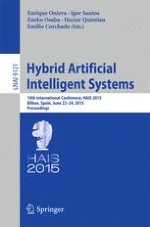2015 | Buch
Hybrid Artificial Intelligent Systems
10th International Conference, HAIS 2015, Bilbao, Spain, June 22-24, 2015, Proceedings
herausgegeben von: Enrique Onieva, Igor Santos, Eneko Osaba, Héctor Quintián, Emilio Corchado
Verlag: Springer International Publishing
Buchreihe : Lecture Notes in Computer Science
